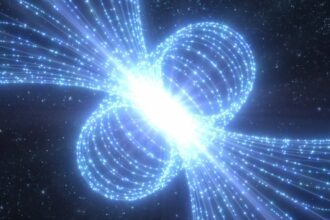The Vikram Sarabhai Space Centre (VSSC), under the Indian Space Research Organisation (ISRO), has achieved a significant breakthrough by qualifying a set of high-energy density Lithium-ion (Li-ion) cells. These innovative cells, utilizing a Silicon–Graphite composite anode, stand as a promising alternative to the currently employed cells, promising reduced weight and cost efficiencies.
The successful flight demonstration of these cells marked a pivotal moment, showcasing their prowess as a feasible battery solution. Deployed on the POEM-3 platform aboard the PSLV-C58, these cells efficiently powered a resistive load during the demonstration. Telemetry data gathered during the flight revealed that the on-orbit voltage, current, and temperature of the battery aligned accurately with the projected values.
Unlike traditional Li-ion cells utilizing pure graphite as the anode material, these cells integrate a Si-Graphite composite. This alteration allows for increased accommodation of Lithium ions per unit mass of the anode material, ultimately augmenting the energy density of the cell. Alongside this material modification, the cells incorporate cost-effective hardware readily available in the market. Moreover, their crimped sealing-based design substantially reduces hardware and fabrication costs.
ISRO’s VSSC Demonstrates the power of Si-Gr anode based High Energy Density Li-ion Cells
Impressively, the Silicon High Energy Li-ion cells boast an energy density of 190 Wh/kg and operate within a voltage range of 4.2 to 2.8 V, surpassing the energy density of conventional Lithium-ion cells, which typically stand at 157 Wh/kg. During the flight, these cells exhibited commendable performance, sustaining the battery system for 21 hours across 15 orbits, delivering a capacity of 8.9 Ah, with a final drained voltage of 0.4 V.
Prior to implementing any new systems into operational vehicles and missions, VSSC rigorously qualifies and demonstrates them as piggyback payloads. Similarly, these cells underwent stringent testing to prove their resilience and functionality in the demanding space environment, a feat successfully achieved through the POEM experiment.
This breakthrough by ISRO’s VSSC has instilled confidence in deploying these cells for forthcoming operational missions, where an anticipated 35-40% reduction in battery mass is expected. The versatility of these cells extends beyond space applications, finding utility in ground-based systems as well.






